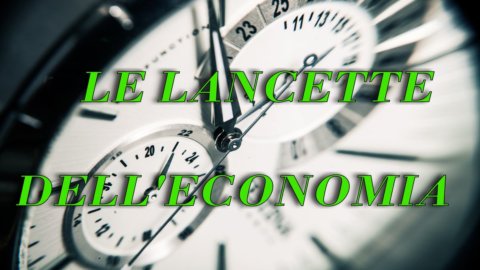REAL INDICATORS. «Everyone knows about evil; but even the good when it exceeds, virtue is changed into a vice." Giuseppe Giusti, annotating the proverb «too much sucks», confirms the universal value of Murphy's lawand its corollaries. Which today we see plastically demonstrated in the events of the economy.
In fact, the recovery is crippled by its own strength. In the rapid ascent out of the Mariana Trench of the deepest recession in times of peace, demand increased so abruptly, and recovered so much, that create gaps in the offer such as to prevent the same demand from being translated into actual purchases.
La production is hampered not by lack of orders, which still continue to rise, but due to the absence of vital components, although sometimes they have an infinitesimal cost compared to that of the final good in which they are incorporated. This is the case with a microchip compared to the price of a luxury car.
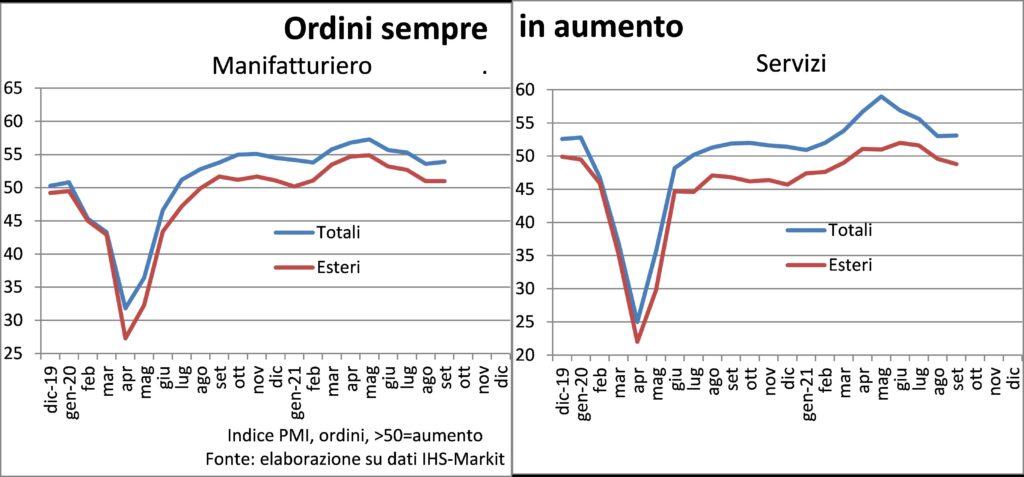
The anomalous bestiary of this crisis sees the problems of the cycle as arising from supply and not from request. That remains and will remain strong.
The pandemic crisis has reshuffled sector dynamics: services were hit more than manufacturing and transport goods more than household goods. And when the recovery started, supply and demand struggled to meet. Even because the offer had been cut to prepare for a lean period that no one knew how long it would last. In the case of raw materials, the cuts arose from past low prices which had discouraged investment in new production capacity. This is also true for XNUMXst century 'commodities' such as microchips.
The "magic" of supply that responds promptly to demand has been overshadowed by various factors. For microchips, for example, increasing production capacity takes a long time, so complex (and expensive) are the dedicated production facilities. And microchips are now ubiquitous: from PCs to mobile phones to washing machines, cars, elevators…
If you can't make new cars because the chips are missing, scarcity pushes demand elsewhere, for example used cars. Which, however, are not part of the GDP (apart from the added value of Dealer of used cars).
Supply bottlenecks are spreading in the most unexpected corners of the production processes. For example, there is a lack of scaffolding: although these are one of the few products that do not contain chips (for now), many buildings are still due to problems with raw materials, and therefore the assembled scaffolding remains there, waiting. Which leads to difficulties in sourcing new scaffolding.
The pandemic creates supply problems also in the labor market. Travel barriers prevent many workers from getting where they are needed, and this is especially true for seasonal migrants. In some countries, from Australia to the United Kingdom, governments have had to hastily introduce additional visas to allow workers to enter, in order to move trucks and tankers (UK) or collect fruit and vegetables that were at risk of rotting in the fields (Australia).
All of this is obviously a hindrance. But in the end, the question will lead the dance. And there are excellent reasons to predict that demand will remain buoyant: expansionary policies, high savings, confidence at the top and buoyant investments, to adjust capacity to greater demand, present and expected, and to new technologies. AND vaccinations that limit contagiousness and mortality of the Covid-19. Orders, despite delivery delays, continue to flock and there is no entrepreneur who does not have a broad smile on his face.
However, even in the absence of bottlenecks and discrepancies between supply and demand, the slowdown is physiological, after the first and powerful rebound. However, annualized growth rates of 10% are not sustainable, whatever the parameter used.
INFLATION. Was it real inflation? The acceleration of quotations raw materials, some semi-finished products, producer prices and consumer prices, total e core lead many to respond positively.
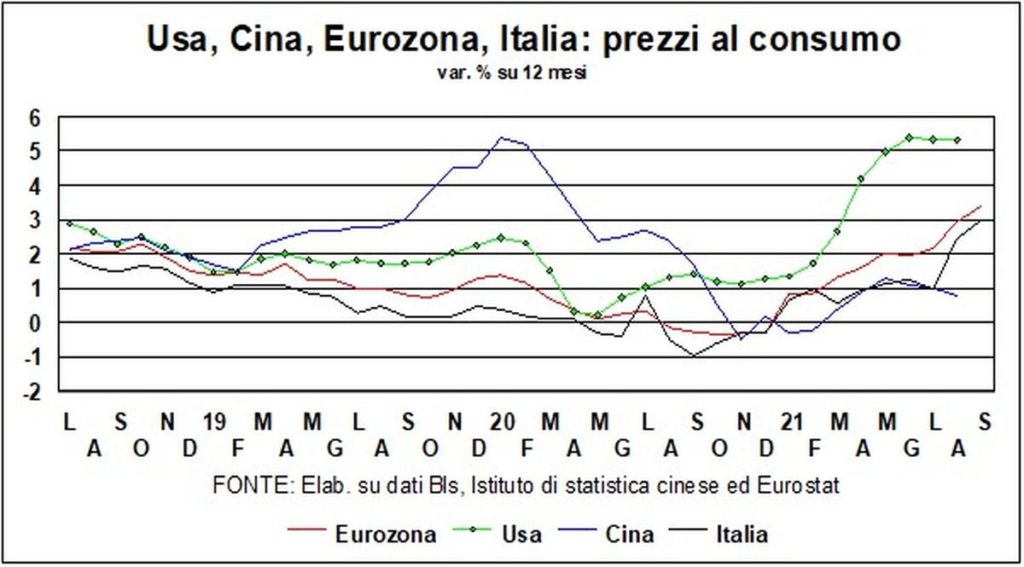
Etymologically, they are right: "inflation" comes from "inflate". And there is no doubt that many prices have been inflated, for the reasons indicated above of scarcity of supply and strong demand and changed in composition compared to pre-Covid. So that lightning struggles to keep "behind the flash". In addition, temporary phenomena have been added to compose a perfect storm of rising energy: calm in the North Sea, drought in China, problems with Norwegian gas and French nuclear plants.
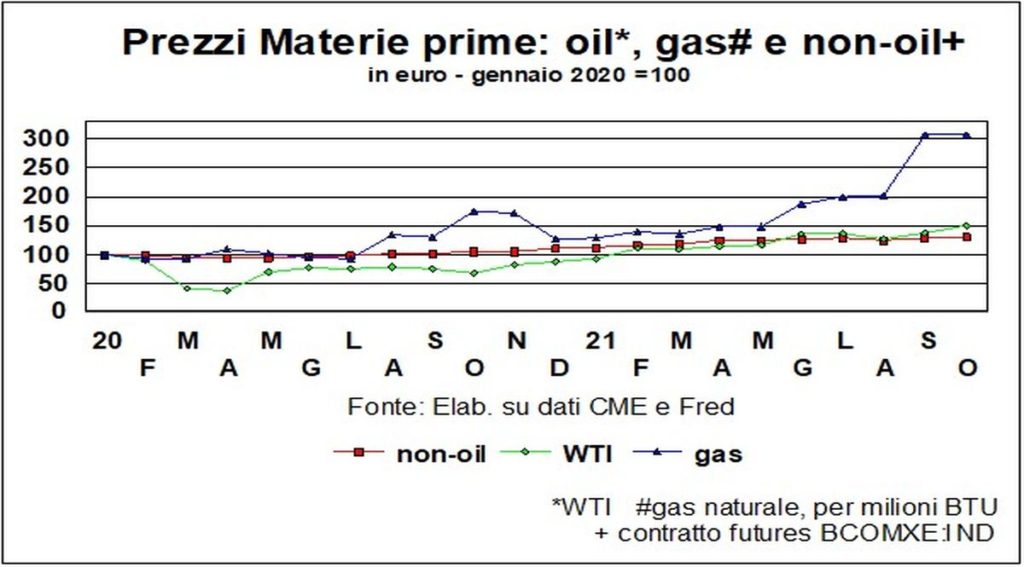
However, economically, inflation occurs when price increases call for other increases of prices that compensate for the loss of purchasing power (in a sort of indexation) and when operators anticipate by expecting further future price increases (de-anchored expectations).
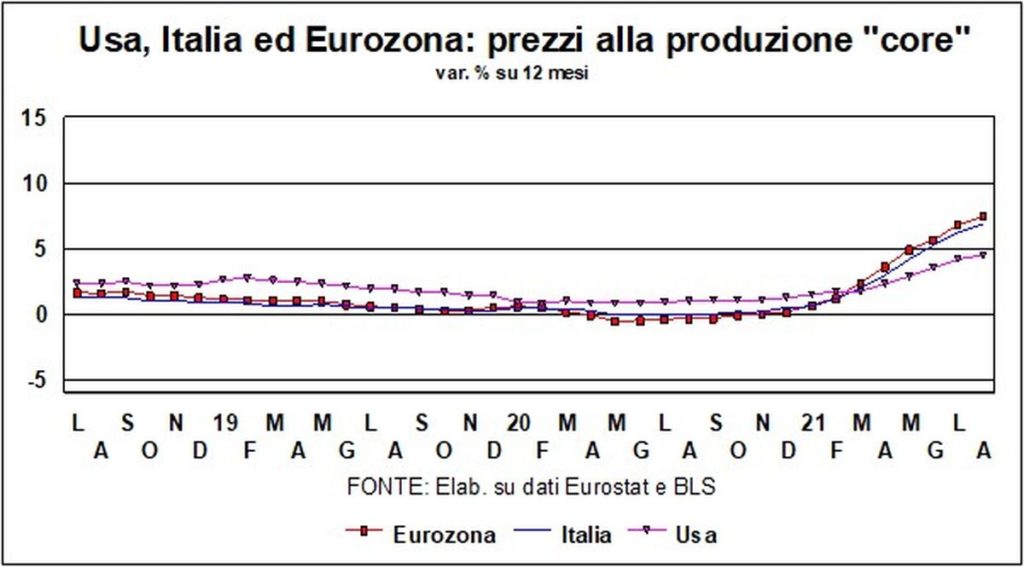
Are we at that point? Absolutely not. For the moment, we observe changes in relative prices, why some goods and wages increase, others do not or not as much, and le inflationary expectations remain unchanged at moderate values.
It may happen that, give and take, i behaviors of producers, workers and consumers adapt to higher price dynamics. However, people today are more concerned about the job than the cost. AND the reserve wage army it is very broad, between active and discouraged unemployed and underemployed. While new technologies increase productivity and competition.
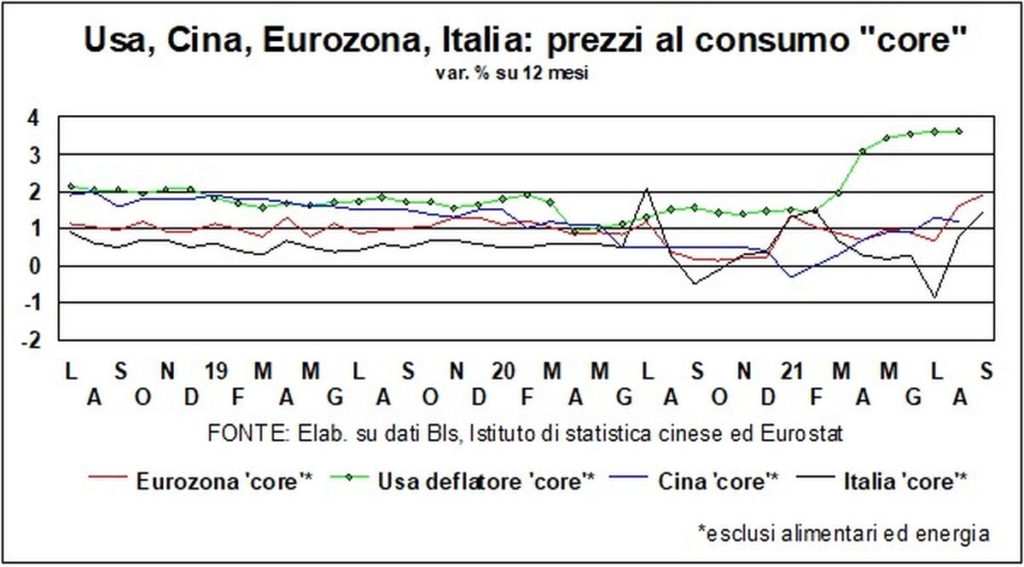
Finally, the market value of energy finally begins to incorporate its use value: let's get used to paying more.
RATES AND CURRENCIES – The famous bottlenecks have also claimed victims on interest rates. Following the confirmation of inflationary tensions, long-term rates have made some attempts to rise.
I American T-bonds they have approached 1,6, but one should not read too much into this increase. Last spring, T-Bonds had reached 1,73, in the presence of inflation (consumer prices) of 2,7%. Now that the inflation rate is doubled, yields have risen by just a handful of basis points. I sign that markets believe in the temporary nature of these price pressures. For btp, here too there was, as in America, an increase in yields but below the spring highs. The same can be said for i Waist, whose yields (always negative) are also below the figure (-0,10%) reached last June.
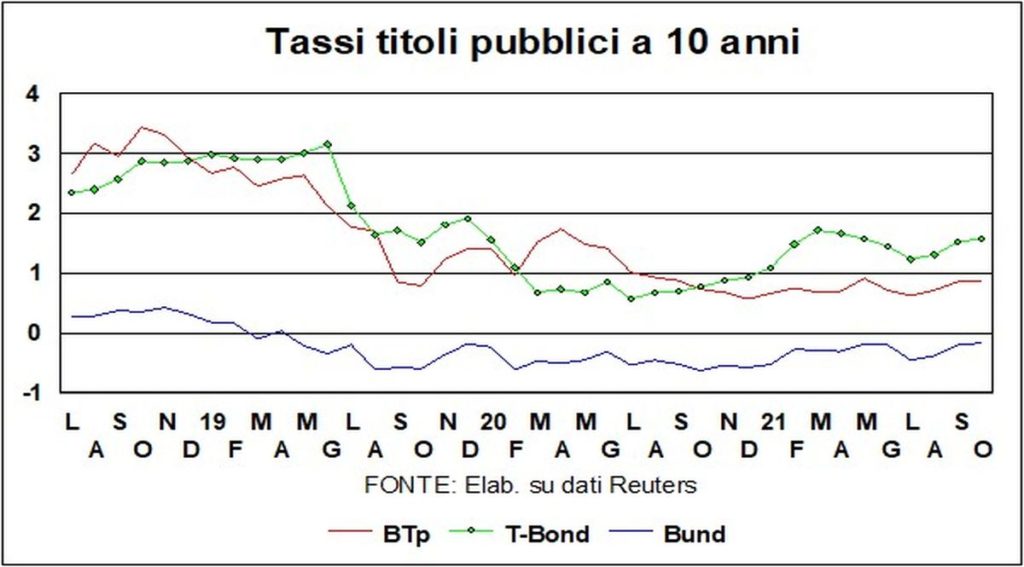
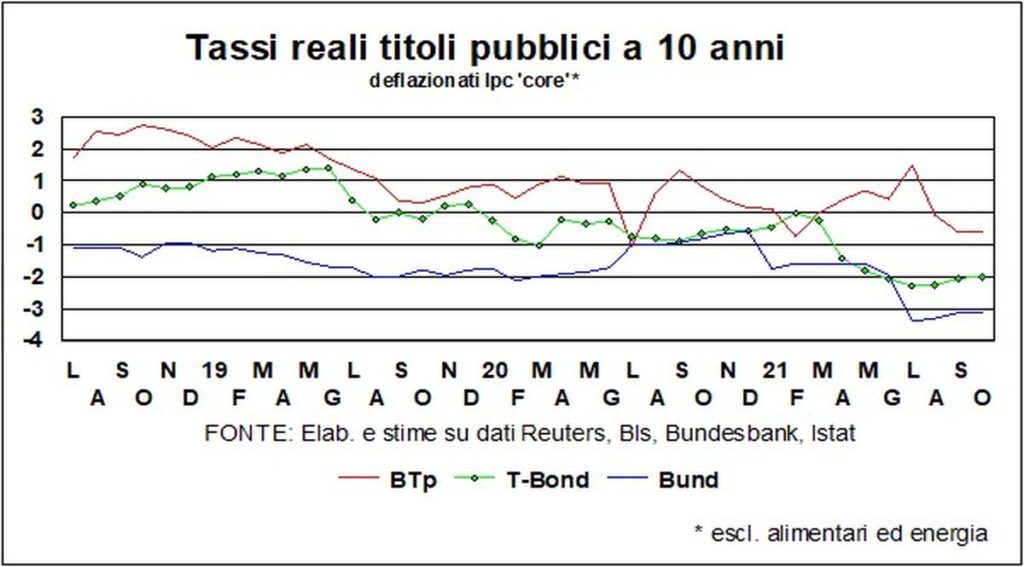
As for i taxi-guide, the major central banks are in no hurry. There Fed signals that there will be an increase next year, while for the ECB the upswing tests seem to be located even further.
Some smaller banks, such as in New Zealand and South Korea, have raised their key rates, mainly concerned by the surge in house prices. But these modest increases (of a quarter of a point) start - like those to come in America and Europe - from levels close to zero, if not below. Also with regard to the unconventional measures (Qe, which however is becoming almost conventional), the oars will only be pulled into the boat gradually, albeit with shorter timescales than the increase in key rates. And in any case they will depend on the performance of the real economy. If this improves, the oars are lifted off the oarlocks; if it doesn't improve, we keep rowing... In short, monetary conditions continue to be very favourable upon recovery.
Il dollar it exited – strengthening – from the range against the euro (1,22-1,17) in which it had been navigating since the beginning of the year. It is now below 1,16, remaining weaker than pre-pandemic levels. On that thin ridge that separates the glass half full from the glass half empty, i factors favorable to the dollar have gained the upper hand, despite the bogeyman of default as a limit to the public debt. This limit is a pantomime, which is repeated with disheartening constancy every time Congress, which has also voted the laws that push up deficits and public debts, must also approve the authorization to increase the debt.
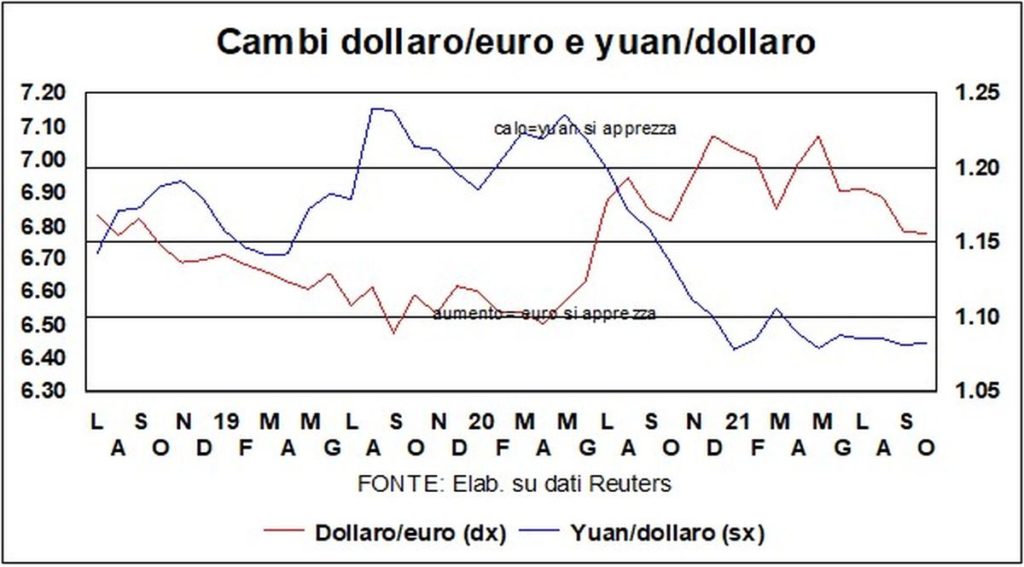
Biden is thus exposed to minority blackmail, which takes advantage of arcane Senate voting rules to deny assent. An agreement will be found in the Cesarini area, but this is not the way to manage a country of such importance. The dollar is essentially favored by the growth differential, and also by a rise, which has become closer, from the "zero" of money market rates.
La chinese coin it has also weakened against the greenback: even in this case, however, it remains stronger than the levels of the beginning of the year and much stronger than the pre-pandemic levels – as befits a country that has held up much better than the others to the impact of Covid.
La stock market correction – shadowed in past analyzes – is ongoing. The traditional definition of the correction is something between 10 and 20% compared to the maximums and, from this point of view, the S&P500, to stay on the American stock market, corrected slightly: we are around 5%. But the mood, in general, is not good.
In any case, as already mentioned in the past, the fix is, indeed, just a fix. For the S&P500, looking back, the average correction lasts about four months and is around 13%. Mandatory warning: these are not buying or selling tips…
Still on the subject of shares, there are those who nervously bite their nails, as regards i contagions from Chinese stock market, thinking about the impacts of the Evergrande crisis. There's no need to be afraid. First, because Chinese financial markets are much less interconnected with the rest of the world than Lehman Brothers was in 2008 – China's stock market capitalization is only 2% of world GDP, little compared to the economy's share in said GDP Chinese (18%). Second, because while we may not be rescue experts, we do know that China has broad shoulders and in this field authoritarianism gives it some advantages.

